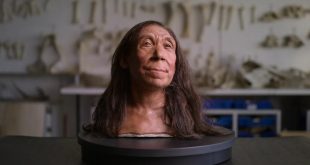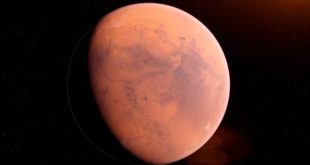A quantum mechanics-based approach has been devised by researchers to forecast the ductility of metals, demonstrating notable efficacy in the context of materials used in elevated-temperature circumstances. This novel methodology, emphasizing the significance of localized atomic distortion, enables fast examination of several materials, simplifying the development procedure for sectors such as aerospace and energy.
A consortium of researchers from Ames National Laboratory and Texas A&M University has devised an innovative method for forecasting the ductility of metals. This methodology, based on quantum mechanics, addresses the need for a cost-effective, efficient, and high-throughput method to forecast ductility. The efficacy of the team was shown in the context of refractory multi-principal-element alloys. These materials have promise for use in high-temperature environments, yet they often exhibit insufficient ductility, which hinders their suitability for various applications in aircraft, fusion reactors, and land-based turbines.

Predicting Metal Ductility: A Complex Task
Ductility refers to the ability of a substance to endure physical strain without experiencing cracking or fracture. Prashant Singh, a scientist affiliated with Ames Lab and serving as the head of theoretical design endeavors, asserts that the present state of metal ductility prediction lacks rigorous methodologies. Moreover, conducting trial-and-error experiments incurs significant costs and consumes a substantial amount of time, particularly in very challenging circumstances.
Atoms are often represented by hard spheres that exhibit symmetry. Nevertheless, Singh elucidated that in actual materials, the atoms exhibit variations in size and possess distinct forms. During the process of combining elements with atoms of varying sizes, the atoms consistently adapt to fit inside the predetermined space. This conduct gives rise to localized atomic distortion.
Quantum mechanics improves the accuracy of predicting ductility.
The updated technique integrates the consideration of local atomic distortion to ascertain the brittleness or ductility of a material. Furthermore, it enhances the functionalities of existing methodologies. The existing methodologies have little efficacy in accurately differentiating between ductile and brittle systems when subjected to minor changes in composition. According to Singh, the use of a quantum mechanical element in the novel technique enables the capture of intricate features that were previously absent.
One additional benefit of this novel high-throughput testing approach is its enhanced efficiency. Singh clarified that it has the capability to swiftly test a large number of materials. The velocity and capability enable the anticipation of material combinations that merit further investigation at the experimental stage. This approach reduces the temporal and resource requirements associated with the exploration of these materials using experimental methodologies.
Validation and Implications for Applications at High Temperatures
Gaoyuan Ouyang, an Ames Lab Scientist, spearheaded the team’s experimental endeavors to assess the efficacy of their ductility test. Validation tests were conducted on a collection of projected refractory multi-principal-element alloys (RMPEAs). Renowned for their suitability in high-temperature conditions, RMPEAs exhibit promise for use in aircraft propulsion systems, nuclear reactors, turbines, and other energy applications.
According to Ouyang, the team’s validation testing revealed that the ductile metals exhibited substantial deformation when subjected to high stress, but the brittle metals experienced cracking under comparable loads. This finding provides confirmation of the resilience of the novel quantum mechanical approach.
The publication titled “A ductility metric for refractory-based multi-principal-element alloys,” authored by Prashant Singh, Brent Vela, Gaoyuan Ouyang, Nicolas Argibay, Jun Cui, Raymundo Arroyave, and Duane D. Johnson and published in Acta Materialia, provides a more detailed analysis of this study.
 Tech Gadget Central Latest Tech News and Reviews
Tech Gadget Central Latest Tech News and Reviews




